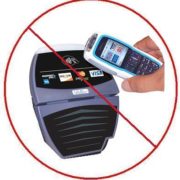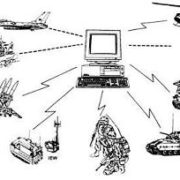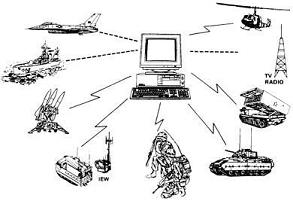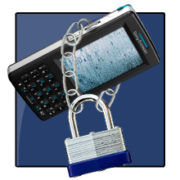Suppose you’re stuck in the middle of nowhere with nothing, but a broken smartphone? Don’t despair! The good folks at ansonalex.com have info that could save your life. Check out the infographic below:
 As noted in Wired, the Defense Department has taken a major step toward its goal of “a smartphone for every soldier.” They recently released their Commercial Mobile Device (CMD) Implementation Plan, which details dates, stages, and buys over the next several years. The DoD may be purchasing as many as 600,000 smartphone devices. As expected, the Pentagon is deliberately being “device agnostic.” They are looking at Apple and Google –based communication devices, and they have promised to support Blackberry smartphones as well. See below for links to the CMD Implementation plan as well as their overall strategy, which was released last June.
As noted in Wired, the Defense Department has taken a major step toward its goal of “a smartphone for every soldier.” They recently released their Commercial Mobile Device (CMD) Implementation Plan, which details dates, stages, and buys over the next several years. The DoD may be purchasing as many as 600,000 smartphone devices. As expected, the Pentagon is deliberately being “device agnostic.” They are looking at Apple and Google –based communication devices, and they have promised to support Blackberry smartphones as well. See below for links to the CMD Implementation plan as well as their overall strategy, which was released last June.
Exerpt from; DoD Commercial Mobile Device Implementation Plan
“As a result of a JROC Capability Gap Assessment, OSD guidance, and strong end user demand for secure classified and unclassified mobile solutions, DoD is orchestrating an effort to provide wireless network services infrastructure, approved devices, applications management, and policies to protect and secure the mobile DoD information ecosystem. The Implementation Plan updates the DoD Mobile Device Strategy, Reference (a), to establish wireless voice, video, and data capabilities in accordance with DoD Instruction 8100.04, Reference (c), by October 2013. The CMD Implementation Plan establishes the framework to equip users and managers with mobile solutions that leverage commercial off-the-shelf products, improve functionality, decrease cost, and enable increased personal productivity….”
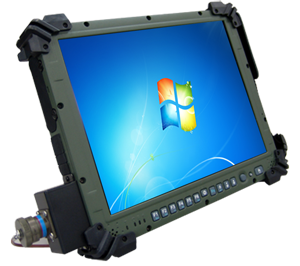 AMREL now offers a turn-key fully rugged avionics tablet complete with an integrated MIL-STD-1553 card supplied by Data Device Corporation (DDC). DDC is the world’s leading MIL-STD-1553 hardware and software provider. DDC has supplied integration support along with their 1553 Mini-PCIe card to help design this turn-key solution. Read more
AMREL now offers a turn-key fully rugged avionics tablet complete with an integrated MIL-STD-1553 card supplied by Data Device Corporation (DDC). DDC is the world’s leading MIL-STD-1553 hardware and software provider. DDC has supplied integration support along with their 1553 Mini-PCIe card to help design this turn-key solution. Read more
 This is the second in a series of articles, which predict what will not happen in 2013. One of the most touted recent trends is “contactless payment” with Near Field Communication (NFC). Despite what some enthusiasts say, I don’t think people will be throwing away their wallets and credit cards this year for a NFC phone.
This is the second in a series of articles, which predict what will not happen in 2013. One of the most touted recent trends is “contactless payment” with Near Field Communication (NFC). Despite what some enthusiasts say, I don’t think people will be throwing away their wallets and credit cards this year for a NFC phone.
The beginning of the New Year often marks an avalanche of stories enthusing about the “next big thing.” Usually, a glorious, completely transformed future is predicted due to the disruptive qualities of a new technology.
This article will be the first of a series in which I’ll try to let the steam out of a few commonly hyped trends. To be clear, each of these technical innovations represents genuine change in the way we approach mobile computing. I just think there are going to be bumps in the road.
 Discussions about combat networks usually concern issues of architecture, SWaP, capabilities, interoperability, and the Agile process. It’s easy to lose sight of impact of technological decisions on human beings. Recently I was reminded about the real-world effects of network solutions. The Business Insider excerpts a description from Garrett Anderson’s blog about his duties as a platoon radio operator in Fallujah. Explaining why he hates to talk on the telephone, he cites one incident:
Discussions about combat networks usually concern issues of architecture, SWaP, capabilities, interoperability, and the Agile process. It’s easy to lose sight of impact of technological decisions on human beings. Recently I was reminded about the real-world effects of network solutions. The Business Insider excerpts a description from Garrett Anderson’s blog about his duties as a platoon radio operator in Fallujah. Explaining why he hates to talk on the telephone, he cites one incident:
At the recent Ground Robotics Capability Conference (GRCC), I surveyed a number of vendors about what was on their mind. I read them a list of topics that are frequently covered in OCU Pro newsletters as well as AMREL’s corporate blog.
By far, one topic elicited more interest than any other: interoperability. On one hand, I was pleased. AMREL has been a leader for developing solutions that have the ability to “… to work with or use the parts or equipment of another system” (Merriam-Webster definition). For example, our Flexpedient® Solutions enable kit building of Operator Control Units with common control capabilities.
 AMREL’s handheld DB6 is on the cover of this month’s Defense Tech Briefs. April’s issue’s featured article is “Improving Battlefield Connectivity for Dismounted Forces,” so it’s only natural that they would spotlight the smallest, rugged, handheld in the world that can run a full Windows OS. Click here to read about the search for the ideal front-line computing platform.
AMREL’s handheld DB6 is on the cover of this month’s Defense Tech Briefs. April’s issue’s featured article is “Improving Battlefield Connectivity for Dismounted Forces,” so it’s only natural that they would spotlight the smallest, rugged, handheld in the world that can run a full Windows OS. Click here to read about the search for the ideal front-line computing platform.
 Are keyboards dead? In view of their ubiquity, and proven usefulness, this may seem to be an absurd question, but some people are considering this possibility. The success of the keyboard-less iPad in penetrating the business market was one of 2011’s big surprises. Also, in an interview in the IEEE Spectrum, journalist Sally Wiener-Grotta noted the impressive number of stylus interfaces on display at the recent Consumer Electronics Show (CES). She even cites studies that claim that when we use handwriting input, “… we absorb information better and we express information better…” Read more
Are keyboards dead? In view of their ubiquity, and proven usefulness, this may seem to be an absurd question, but some people are considering this possibility. The success of the keyboard-less iPad in penetrating the business market was one of 2011’s big surprises. Also, in an interview in the IEEE Spectrum, journalist Sally Wiener-Grotta noted the impressive number of stylus interfaces on display at the recent Consumer Electronics Show (CES). She even cites studies that claim that when we use handwriting input, “… we absorb information better and we express information better…” Read more
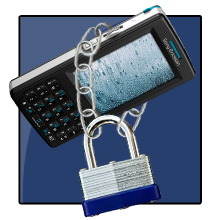 As reported previously in this blog, the 2nd Network Integration Evaluation (NIE) appears to have successfully tested ARMY’s communication systems. Not all the results were reassuring. For example, there was some nasty feedback about the Nett Warrior. Most surprising was that many warfighters claimed that they didn’t want or need a smartphone. The ARMY’s smartphone program is threatened by other dangers as well. As noted in Wired, the smartphone could be a casualty of proposed Defense cuts. However, one of the most serious problems is the one that was identified in the earliest days of the program: security.
As reported previously in this blog, the 2nd Network Integration Evaluation (NIE) appears to have successfully tested ARMY’s communication systems. Not all the results were reassuring. For example, there was some nasty feedback about the Nett Warrior. Most surprising was that many warfighters claimed that they didn’t want or need a smartphone. The ARMY’s smartphone program is threatened by other dangers as well. As noted in Wired, the smartphone could be a casualty of proposed Defense cuts. However, one of the most serious problems is the one that was identified in the earliest days of the program: security.
I haven’t heard too much about it from the ARMY recently, but some recent news items have raised the prominence of this issue: Read more
American Reliance, Inc.
789 N Fair Oaks Ave,
Pasadena, CA 91103
Office Hours
Monday-Friday:
8:00 am – 5:00 pm PST
Saturday: Closed
Sunday: Closed
Main: +1 (626) 482-1862
Fax: +1 (626) 226-5716
Email: AskUs@amrel.com
Blog Posts
Mobile Biometric Solutions
Mobile Biometric Smartphones & Tablets
BioFlex S® Commercial Smartphones
BioSense AT80B | 8″ Android Biometric Tablet
BioSense PA5 | 10.1″ (Gen 2) Android Biometric Tablet
BioSense PA5 | 10.1″ Android Biometric Tablet
BIOPTIX PM3B | 7″ Windows Biometric Tablet
BIOPTIX PM5B | 10.1″ Windows Biometric Atom Tablet





